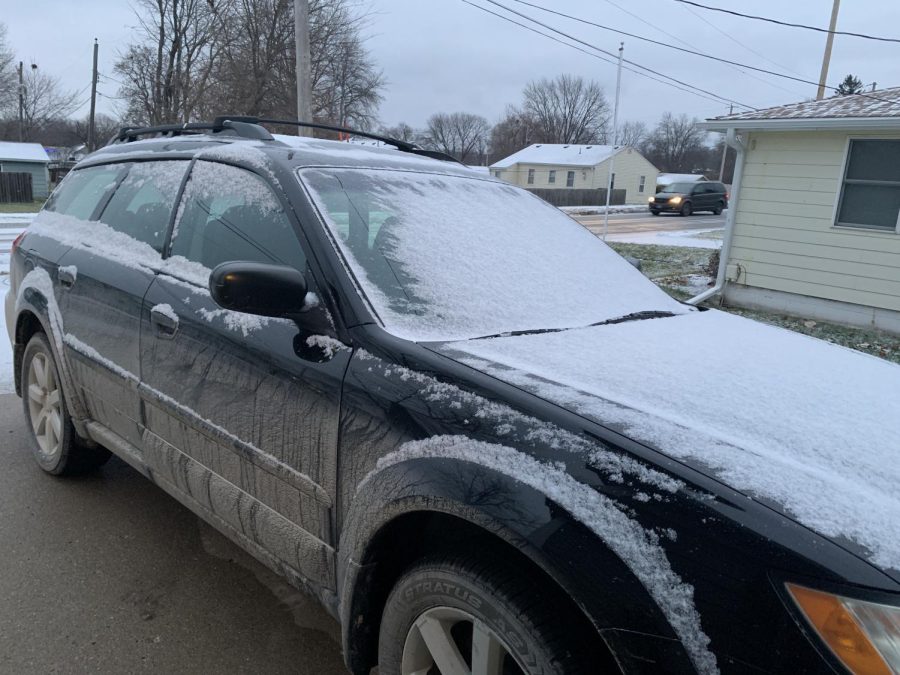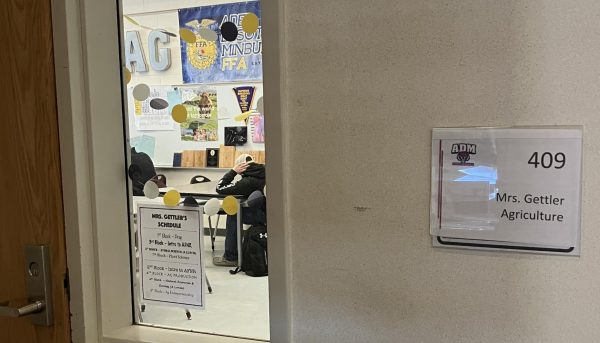Winter Driving: How to Keep Yourself Safe
According to the U.S. Department of Transportation’s Federal Highway Administration, 70% of the nation’s roads receive at least 5 inches of snow a year. Because of this, over 1,300 people are killed and 116,800 people are injured in winter weather crashes. So how can you avoid becoming a statistic? And what should you do if you crash?
Skip Eckhardt, a driving instructor for Street Smarts for 11 years, says the best way to avoid a crash is to increase your following distance from the car in front of you. AAA says that the normal safe following distance of 3 seconds should be increased to a minimum of 5 or 6 seconds. This means that when you are driving, you should hit a fixed point on the road 5 or 6 seconds after the person in front of you. Police officer of 22 years, Monte Keller, says that people usually get into crashes after the first snow or ice of the year. “People are just kind of readjusting to driving in the winter,” he says. Driving slowly and without distractions, like phones or the radio, can be a good way to learn how to drive during the winter. Both Eckhardt and Keller agree that removing snow and ice is crucial to driving safely. “By law, all those windows, the front, the rear window and the driver’s need to be visible,” Keller tells. Readers Digest breaks down how to do this.
- Shovel around the wheels of the car first and check for snow in the tailpipe
- Use a foam brush or snow broom lightly on all of the windows of your car to remove the snow
- Remove snow from your car’s lights
- Let your heat or defroster remove the leftover snow and ice
Preparing for a storm is necessary anytime there is a possibility of bad weather. One way to do so is by visiting a local forecast or seeing the road conditions on websites like 511ia.org. Looking at these websites can help you determine when and where you should drive. One way to prepare for storms is by stocking your car with supplies, in case of an accident. According to Keller, “It’s good to have kind of an emergency kit in your vehicle.” This should include things like:
- Blankets
- Flashlights
- Candles
- A bag of salt
- A small shovel
- Water and food
- Matches
- Extra clothes
- Extra windshield wiper fluid
Being cautious also requires that your car must be up to date. Before winter, it is always a good idea to check your tire tread and fill them up, replace your oil and anti-freeze, keep at least half a tank of gas in your car at all times and consider investing in winter tires. Also take into account that just because you have four or all-wheel drive, it does not mean you can’t be a victim of winter driving issues. Monte Keller says that “Usually with four-wheel drive, they are going to be heavier vehicles and more difficult stop.”
While you can do everything in your power to prevent a crash, you aren’t always immune to them. That is why it is important to know how to react to one. If you become a victim of a car crash, the first thing you should do is make sure you and your passengers are safe. If there is any damage to the car or the passengers, law enforcement should be called. Then, turn on your hazards and wipe off any snow from your lights so you are visible to other cars. If it is safe, you can even try to push the car out of the snow yourself.
With 17% of car accidents happening in the winter, it is always a good idea to be cautious, clear-headed and courteous to other drivers on the road. Learning more about winter driving and how to be safe could be the difference between life and death. In case of a winter storm, drive slowly, be prepared, and if you can, stay home.







